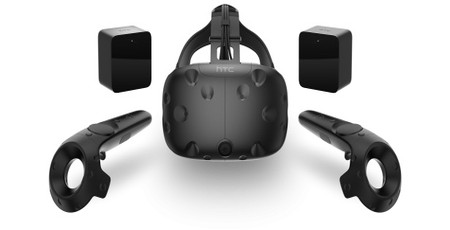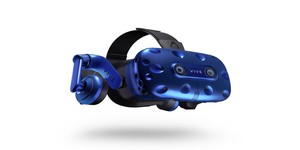
Valve has announced the launch of a new feature for its SteamVR platform which aims to both reduce the demand of virtual reality on lower-end systems while providing higher visual fidelity on higher-end systems.
Available in beta form now, SteamVR's new dynamic resolution feature replaces the previous supersampling option in Valve's virtual reality platform. When activated - which is expected to be the default mode when the software is fully released to the general public - SteamVR will automatically calculate the correct rendering resolution to take full advantage of a user's graphics processor. Those with high-end GPUs will find the resolution increased from the default; those with lower-end GPUs will find it decreased in order to improve performance. Naturally, either can be overridden manually for those who prefer full control over their graphical settings.
'The SteamVR runtime measures the speed of your GPU and tells applications to render at an appropriate resolution based on the power of your GPU. There are many customers right now with GPUs that aren’t being fully utilised,' explains Valve's Alex Vlachos in the launch announcement. 'These customers will now automatically have their VR application resolution up-res'ed – the end result being a clearer and better looking VR experience. Customers who have GPUs that can’t quite render the native resolution of their headset will automatically see images rendered at a slightly lower resolution that is more appropriate for the speed of their GPU.'
The feature is active across all SteamVR-compatible headsets, Valve has confirmed, including the HTC Vive and Vive Pro and their Facebook-owned rival the Oculus Rift as well as the full phalanx of Windows Mixed Reality (WMR) headsets from various manufacturers. Valve is particularly pushing the technology for those investing in next-generation headsets, pointing out that it allows users to buy high-resolution headsets now without worrying about whether their graphics card has enough grunt to drive them at their native resolution - though, naturally, the benefit of the high-resolution hardware won't be felt until and unless a sufficiently beefy GPU is fitted.
The feature is active now on the SteamVR public beta channel. At present it only adjusts per-system and not per-application, does not dynamically vary the resolution as the application is running, and only reduces the rendering resolution below native on Vive Pro and high-resolution Windows Mixed Reality devices; those running a first-generation Vive or Rift will see no change if SteamVR detects that their GPU isn't powerful enough to run the devices natively.

MSI MPG Velox 100R Chassis Review
October 14 2021 | 15:04









Want to comment? Please log in.